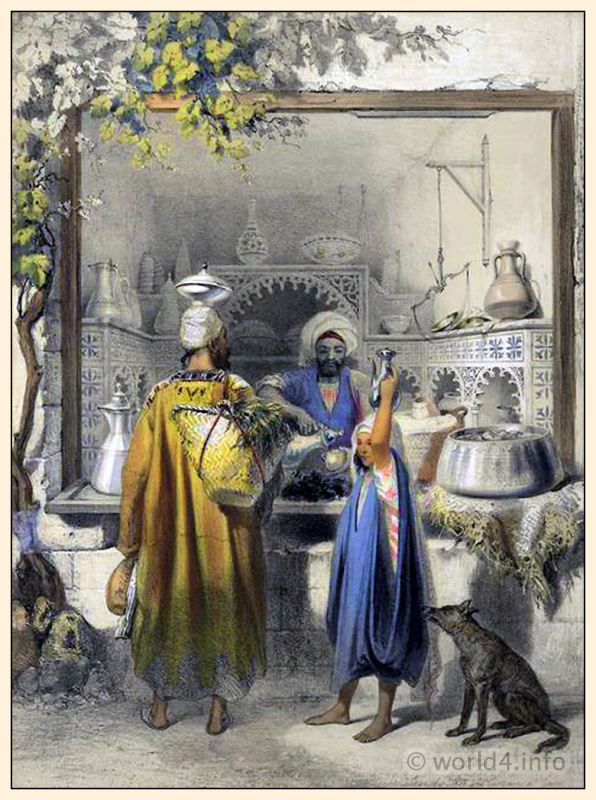The Nilometer of Roda is considered the most important Nilometer from Islamic times and was built under the aegis of the Umayyad Caliph Sulaiman Ibn Abd al-Malik in 715/716 on the southern tip of Roda Island in Cairo. After being destroyed by a flood, it was rebuilt by the Abbasid Caliph al-Mutawakkil in 861.

THE NILOMETER.
On the point of the island Rhoda, between Geeza and Cairo, near the middle of the river, but nearer to Geeza, is a round tower, and in that an apartment, in them idle of which is a very neat well, or cistern, lined with marble, to which the Nile has free access, through a large opening like an embrasure, the bottom of the well being on the same level with the bottom of the river.
In the middle of this well rises a thin column, as far as I can remember, of eight faces of blue and white marble, to the foot of which if you are permitted to descend, you are then on the same plane with the foot of the column and bottom of the river. This pillar is divided into twenty peeks, called Draa El Belledy, of twenty-two inches each. The two lowermost peeks are not divided at all, but are left absolutely without mark, to stand for the quantity of sludge the water deposits there, and which occupies the place of water.
Two peeks are then divided on the right hand into twenty-four digits each; then, on the left, four peeks are divided each into twenty-four digits; then, on the right, four; and, on the left, another four: again,four on the right, which complete the number of eighteen peeks from the first division marked on the pillar, each of twenty-two inches. The whole, marked and unmarked, amounts to thirty-six feet eight inches english.’
When this country was conquered by the turks, a tribute was imposed upon it. All it’s wealth, however, consisting in its produce, it would be vain to require this tribute, when the deficiency of the inundation keeps the land in a state of barrenness.
Accordingly the Mikeas, or Nilometer, is of the highest importance, not to the people only, but to the grand signior, as it indicates the extent of the impost, which the circumstances of the country will allow him to exact. If the land rendered fit for cultivation by the overflowing of the Nile will be too little, or barely sufficient, to keep the people from starving, the sovereign must of necessity forego his tribute. When the inundation reaches to a certain extent, the produce will allow the grand signior to receive a certain portion: and this, which is indicated by the rise of the water to the height of sixteen peeks at the Mikeas, is announced to the people by the cry of wafaa ullah, by which they are given to understand, that the meery, or tribute, will be demanded.
In this case, however, it is necessary, to measure the land, in order to ascertain how much the water has overflowed, for which the tenant is to pay the whole of the tax; how much has been watered by means of machines, for which he pays only half, the other half being allowed as a compensation for the expense of the additional labour required; and how much has been incapable of receiving benefit, left uncultivated, and therefore remains exempt from taxation. If the water should rise to the height of twenty peeks, the cry of men jibbel alla jibbel proclaims, that the whole of the land will be fertilized, and become liable to the tribute.
In the midst of this expanse of water, covering the whole of the low lands, the banks of the Nile appear, beautifully studded with villages, to which the palm-trees around them are no inconsiderable ornament. As soon as the river retires from the fields, they are sown with all sorts of grain; and as the heat and moisture speedily occasion the seed to germinate, the face of the country quickly assumes the appearance of a delightful green meadow, which in a short time is variegated with the hues of flowering
plants and ripening corn.
Source: Views in Egypt, from the original drawings in the possession of Sir Robert Ainslie, taken during his embassy to Constantinople by Luigi Mayer. London: Printed by Thomas Bensley, for R. Bowyer, 1801.
Related
Discover more from World4 Costume Culture History
Subscribe to get the latest posts sent to your email.






